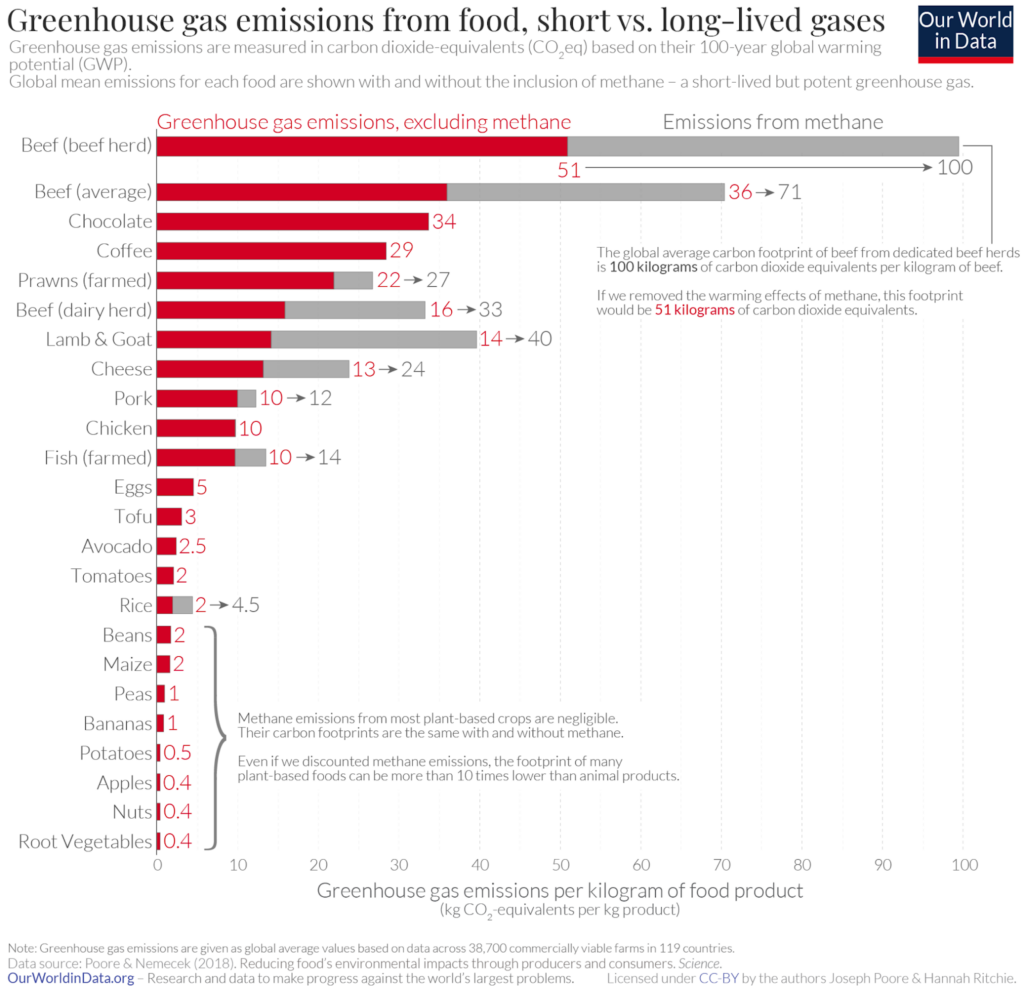RHS Academy: Red Meat Overview: Potential Benefits and Risks for Human Health

Recently, students at The Academy at Rye High School, a project based learning program, looked at a variety of societal issues. MyRye.com is sharing some of this work.
Red Meat Overview: Potential Benefits and Risks for Human Health
By: Jack Acciavatti
Jack Acciavatti is a senior at The Academy at Rye High School. He enjoys playing sports and is a captain of the football and rugby teams. He also enjoys baking, fishing and spending time with friends and family. He plans to attend Wake Forest University in the fall. His research examines the differences between unprocessed and processed meat and the benefits and downsides for human health. It also looks at the correlation between red meat and cardiovascular disease and type 2 diabetes.
Introduction:

Red meat has long been established as an exceptional source of protein and several vital nutrients, including iron, zinc, and vitamin B12. However, several studies have linked red meat to an increased risk of cardiovascular disease (CVD), colon cancer, and type 2 diabetes.
From 1960-1980 the average per capita consumption of red meat in pounds was 139.35, and decreased to 112.65 from 2000 to 2022 (National Chicken Council). Over the same period of time, while the consumption of red meat declined, the diseases listed above have all greatly increased in quantity and prevalence.
In the following review, meat is broken down into 3 categories, 1) red meat, which will include unprocessed red meat (including beef, lamb, veal, and pork), 2) white meat (including chicken, game, and turkey), and 3) processed meat (including cured and smoked meats, ham, bacon, sausages, hamburgers, salami, and tinned meat) (Mcafee et al., 2009). This research will examine existing literature for the potential benefits and risks associated with red and processed meat, including Cardiovascular disease, type 2 Diabetes and environmental concerns.
Cardiovascular disease:
Studies examining meat consumption and cardiovascular disease (CVD) risks often lack consistency in outcomes due to various factors such as incomplete reporting of meat intake amounts, processing methods, and dietary patterns. Some studies focus on broader dietary habits, potentially leading to misleading conclusions as they do not isolate red meat consumption from other unhealthy lifestyle factors typical in Western diets. For example, exercise levels or other foods may be eaten along with red meat, such as a burger bun, french fries, and/or soda.
Authors also believe that it is difficult for studies to provide a convincing mechanism for red meat in CVD as past research predominantly assumed that red meat’s fat and fatty acid composition are responsible for its implication in CVD (Mcafee et al., 2009). Common dietary recommendations with red meat are to reduce fat intake to lower the chances of CVD. However, researchers found that, “With consumption of a low-fat diet, the addition of up to 180 g/d of lean beef did not negate the total and LDL cholesterol lowering effects of the diet in hypercholesteroleamic subjects”. The researchers also noticed no relationship between moderate red meat consumption (18–61 g/d) and blood concentrations of cholesterol (Mcafee et al., 2009).
It is also interesting to note that the authors found that red meat produced in 2009 was leaner and lower in fat content than in 2000. When trimmed of excess fat content, red meat is equal to or lower than the saturated fatty acid (SFA) contents of some white meats (Mcafee et al., 2009). When looking at fats, authors conclude that intake of Elaidic acid, the majority of which is industrially produced trans fat, which includes hydrogenated vegetable oils in fried foods, can negatively affect cholesterol metabolism in humans and has grown in immense popularity over animal fats. To conclude, the authors state that there is a lack of evidence that consuming leaner cuts of red meat that are trimmed of excess fat can increase the risk of CVD, but they also state that more research should be done on this topic.
Diabetes Mellitus:
Red meat consumption and its association with type 2 diabetes, also known as diabetes mellitus (DM), has been gaining attention as of late, in part due to a recent Harvard article titled, Red meat consumption associated with increased type 2 diabetes risk. Researchers at Harvard analyzed health data from 216,695 participants from several health studies who answered questionnaires about their health. Participants filled out these questionnaires every two to four years for up to 36 years. Researchers found that during this period of time, over 22,000 participants developed type 2 diabetes. Researchers concluded that “Participants who ate the most red meat had a 62% higher risk of developing type 2 diabetes compared to those who ate the least. Every additional daily serving of processed red meat was associated with a 46% greater risk of developing type 2 diabetes, and every additional daily serving of unprocessed red meat was associated with a 24% greater risk.” However, a limitation of this questionnaire data and several other cohort studies is the lack of control in the studies. Similar to the studies on correlation to CVD, existing studies lack comprehensive information regarding the specific quantity of red meat intake, the quality of the meat, its preparation methods, and all fail to consider other crucial aspects of participants’ diets and overall health. They also disregard factors like the level of physical activity, as well as any potentially unhealthy habits that may influence the outcomes.
Another study labeled Associations of processed meat and unprocessed red meat intake with incident diabetes: the Strong Heart Family Study observed associations of processed meat and unprocessed red meat intake with incident diabetes within populations of American Indians with high rates of obesity and diabetes. Authors state that fifty percent of American Indians (AIs) develop diabetes by age 55 (Fretts et al., 2012). Fretts and colleagues found that processed meat consumption was associated with 35% higher risk, while unprocessed red meat consumption was not associated with additional risk (Micha et al., 2012).
This study displays how processed red meat was shown to have an associated risk with type 2 diabetes, but not unprocessed red meat. Researchers believe this is due to the sodium levels and preparation processes associated with processed meat. Authors from Unprocessed Red and Processed Meats and Risk of Coronary Artery Disease and Type 2 Diabetes – An Updated Review of the Evidence state both, “On average, processed meats contain about 400% more sodium and 50% more nitrates per gram” and “High-temperature commercial cooking or frying, commonly used in preparing processed meats can introduce heterocyclic amines and polycyclic aromatic hydrocarbons, which could increase risk of both CHD and DM (Micha et al., 2012).”
Another article titled, Health effects associated with consumption of unprocessed red meat: A Burden of Proof Study, reviewed 17 prospective cohort studies evaluating the relationship between unprocessed red meat consumption and type 2 diabetes among 1,619,574 participants (Lescinsky et al., 2022). Researchers found a lack of evidence between unprocessed meat consumption and the risk of type 2 diabetes. Researchers conclude that the relationship equated to a two-star rating at the lower threshold of two-star pairs out of five, which was at the boundary between weak evidence and no evidence of an association between consumption of unprocessed red meat and increased risk of type 2 diabetes (Lescinsky et al., 2022). Lastly, researchers from a 2022 article titled, Red meat consumption and risk factors for type 2 diabetes: A systematic review and meta-analysis of randomized controlled trials observed that previous studies using observational studies found an association between red meat and risk of type 2 diabetes. However, this evidence was not supported by using randomized control trials. Researchers state in their results, “Compared to diets with reduced or no red meat intake, there was no significant impact of red meat intake on insulin sensitivity, insulin resistance, fasting glucose, fasting insulin, glycated hemoglobin, pancreatic beta-cell function, or glucagon-like peptide-1. Red meat intake modestly reduced postprandial glucose compared to meals with reduced or no red meat intake (Sander, et al.).” Data from their experiment shows that when looked at using randomized controlled trials, there was no significant impact on red meat consumption and type 2 diabetes.
Red Meat benefits:
Red meat contributes to many valuable needs for the human diet. Firstly, red meat is especially high in protein. Lean red meat contains roughly 23-28g per 4 ounce serving. Red meat is also a great source of iron, which is vital for many cellular processes in the body. It is also used to make hemoglobin, a protein in red blood cells that carries oxygen from the lungs to all parts of the body, and myoglobin, a protein that provides oxygen to muscles (National Institution of Health., 2023). Heme iron is also more bioavailable in meats than seafood, and it is stated that vegetarians who do not eat meat need almost twice as much iron because their bodies don’t absorb non-heme iron as well. Red meat is also a more significant source of heme iron compared to poultry and fish (Johnston et al., 2007). Iron deficiency anemia, a nutritional deficiency low in iron, affects about 30% of the population (Kumar et al., 2022). Eating red meat can prevent this deficiency. Red meat is also a significant source of vitamin B12, which is naturally found only in animal products. Vitamin B12 is an essential nutrient needed to form red blood cells and DNA. It is also a key player in the function and development of brain and nerve cells (Harvard T.H. Chan, 2023). “According to Cosgrove and colleagues, red meat is a major dietary source of B12, providing over two-thirds of the daily requirement in one 100g serving (Cosgrove et al., 2005).”
Beef and lamb are also very rich sources of zinc, another key nutrient that is vital for enhancing immune function, protein and DNA synthesis, wound healing, and cell signaling and division (National Institution of Health, 2022). Red meat is also high in Niacin, Selenium, Choline, Creatine, Vitamin B6, Phosphorus, and Taurine, all important vitamins and minerals for the body.
Environmental Impacts
Even though red meat is exceptionally high in protein and nutrients, its production is responsible for an unproportionally large share of negative environmental impacts. Animal agriculture occupies 77% of all agricultural lands, 30% of all water resources, and 12-20% of human-induced Greenhouse Gas Emissions (Smetana et al., 2023). In addition, cattle is now the No. 1 agricultural source of greenhouse gasses worldwide and a single cow produces between 154 to 264 pounds of methane gas per year. Cows and other ruminant animals, such as goats and sheep, emit methane as a byproduct as they digest grasses and plants. After the gasses are produced they are then released into the air by burping. Methane can be especially bad for the environment for several reasons. Methane is one of the main greenhouse gasses and is responsible for trapping heat in the atmosphere.The United States Environmental Protection Agency states, “Methane’s (CH4) lifetime in the atmosphere is much shorter than carbon dioxide (CO2), but CH4 is more efficient at trapping radiation than CO2. Pound for pound, the comparative impact of CH4 is 28 times greater than CO2 over a 100-year period.” Methane is also the primary contributor to the formation of ground-level ozone, a harmful air pollutant that can cause respiratory problems and other health issues in humans and animals. Methane is also a contributor to the formation of smog, which can harm ecosystems and reduce visibility. It reacts with other pollutants in the atmosphere to produce ground-level ozone and other harmful compounds. In addition to methane cows are also responsible for a large share of carbon dioxide emissions (CO2). Different from methane emissions, the majority of CO2 emissions from cattle and lamb are due to land use changes, such as the conversion of peat soils to agriculture, the land required to grow animal feed, the management of pasture (including liming, fertilizing, and irrigation), and the emissions from slaughter waste. A graph by Our World in Data below displays the significant greenhouse gas emissions from beef and other ruminant animals.

(Ritchie, Hannah, 2020)
This graph displays the harsh environmental impacts of beef, lamb, and goat compared to other foods. The global average carbon footprint from dedicated beef herds is 100 kilograms of carbon dioxide per kilogram of beef, far greater than any other food. Even though unprocessed red meat can be nutritious and part of a balanced diet, its harsh negative environmental impacts are worth noting.
Survey
After researching this topic, I sent a series of Google Forms questions to moms in Rye to gather information regarding red meat. The Google forms included Moms ages 30 to 70+, but most were in the 41-60 age range (68.6%). I found that 56.7% of participants reported they ate processed red meat once or twice a week, and 38.8% reported eating processed meat zero times a week. Regarding unprocessed meat, 68.7% of people reported eating it once or twice a week, and 14.9% ate it both zero days a week and three or four days a week. My survey results showed that most moms had a basic understanding of the difference between unprocessed and processed meat. Most stated that processed meats can contain preservatives, nitrates, and additives compared to their unprocessed counterparts. Moms that didn’t eat red meat largely said it was due to either health concerns, environmental concerns, or taste.
Conclusion:
This review of the benefits and risks associated with red meat consumption and increased CVD and DM risk factors has shown mixed results. Both sections display a correlation between processed meat intake and increased risk of both diseases, but low to no risk is seen with intake of unprocessed meat. Incorporating moderate portions of lean, unprocessed meat into a well-balanced diet makes a valuable contribution to the intake of many critical nutrients found only in meat, including Vitamin A, B12, Carnitine, Carnosine, Creatine, D3, DHA, EPA, Heme Iron, and Taurine. On the other hand, processed meat is full of preservatives and high in sodium, which can harm health. Likewise, red meat’s contribution to risk in both CVD and DM requires more research in controlled trials before it can be conclusively linked to playing a causal role in these diseases
Works Cited
Avenue, 677 Huntington, et al. “Red Meat Consumption Associated with Increased Type 2 Diabetes Risk.” News, 19 Oct. 2023, www.hsph.harvard.edu/news/press-releases/red-meat-consumption-associated-with-increased-type-2-diabetes-risk/.
Fretts, Amanda M, et al. “Associations of Processed Meat and Unprocessed Red Meat Intake with Incident Diabetes: The Strong Heart Family Study.” The American Journal of Clinical Nutrition, vol. 95, no. 3, 25 Jan. 2012, pp. 752–758, https://doi.org/10.3945/ajcn.111.029942.
Johnston, J., et al. “Haem and Non-Haem Iron Intake through 17 Years of Adult Life of a British Birth Cohort.” British Journal of Nutrition, vol. 98, no. 5, Nov. 2007, pp. 1021–1028, https://doi.org/10.1017/s0007114507749255. Accessed 20 Apr. 2020.
Kumar, Aditi, et al. “Iron Deficiency Anaemia: Pathophysiology, Assessment, Practical Management.” BMJ Open Gastroenterology, vol. 9, no. 1, 1 Jan. 2022, p. e000759, bmjopengastro.bmj.com/content/9/1/e000759, https://doi.org/10.1136/bmjgast-2021-000759.
Lescinsky, Haley, et al. “Health Effects Associated with Consumption of Unprocessed Red Meat: A Burden of Proof Study.” Nature Medicine, vol. 28, no. 10, 1 Oct. 2022, pp. 2075–2082, www.nature.com/articles/s41591-022-01968-z, https://doi.org/10.1038/s41591-022-01968-z. Accessed 30 Oct. 2022.
MANN, Neil. “Meat in the Human Diet: An Anthropological Perspective.” Nutrition & Dietetics, vol. 64, no. s4 The Role of, Sept. 2007, pp. S102–S107, https://doi.org/10.1111/j.1747-0080.2007.00194.x.
Mann, Neil. “Dietary Lean Red Meat and Human Evolution.” European Journal of Nutrition, vol. 39, no. 2, 1 June 2000, pp. 71–79, https://doi.org/10.1007/s003940050005.
McAfee, Alison J., et al. “Red Meat Consumption: An Overview of the Risks and Benefits.” Meat Science, vol. 84, no. 1, Jan. 2010, pp. 1–13, https://doi.org/10.1016/j.meatsci.2009.08.029.
National Institutes of Health. “Office of Dietary Supplements – Iron.” National Institutes of Health, National Institutes of Health, 10 Dec. 2019, ods.od.nih.gov/factsheets/Iron-Consumer/#:~:text=Iron%20is%20a%20mineral%20that.
“Per Capita Consumption of Poultry and Livestock, 1965 to Estimated 2019, in Pounds.” The National Chicken Council, 2019, www.nationalchickencouncil.org/about-the-industry/statistics/per-capita-consumption-of-poultry-and-livestock-1965-to-estimated-2012-in-pounds/.
Regan, Áine, et al. “The Impact of Communicating Conflicting Risk and Benefit Messages: An Experimental Study on Red Meat Information.” Food Quality and Preference, vol. 38, Dec. 2014, pp. 107–114, https://doi.org/10.1016/j.foodqual.2014.05.019. Accessed 29 Nov. 2020.
Siri-Tarino, Patty W, et al. “Meta-Analysis of Prospective Cohort Studies Evaluating the Association of Saturated Fat with Cardiovascular Disease.” The American Journal of Clinical Nutrition, vol. 91, no. 3, 13 Jan. 2010, pp. 535–46, www.ncbi.nlm.nih.gov/pubmed/20071648/, https://doi.org/10.3945/ajcn.2009.27725.
Tfayli, Hala, and Silva Arslanian. “Pathophysiology of Type 2 Diabetes Mellitus in Youth: The Evolving Chameleon.” Arquivos Brasileiros de Endocrinologia E Metabologia, vol. 53, no. 2, 1 Mar. 2009, pp. 165–174, www.ncbi.nlm.nih.gov/pmc/articles/PMC2846552/.
WILLIAMS, Peter. “Nutritional Composition of Red Meat.” Nutrition & Dietetics, vol. 64, no. s4 The Role of, Sept. 2007, pp. S113–S119, onlinelibrary.wiley.com/doi/full/10.1111/j.1747-0080.2007.00197.x, https://doi.org/10.1111/j.1747-0080.2007.00197.x.
Wyness, Laura. “The Role of Red Meat in the Diet: Nutrition and Health Benefits.” Proceedings of the Nutrition Society, vol. 75, no. 03, 8 Dec. 2015, pp. 227–232, www.cambridge.org/core/journals/proceedings-of-the-nutrition-society/article/role-of-red-meat-in-the-diet-nutrition-and-health-benefits/7EE0FE146D674BB59D882BEA17461F1B/core-reader, https://doi.org/10.1017/s0029665115004267.



